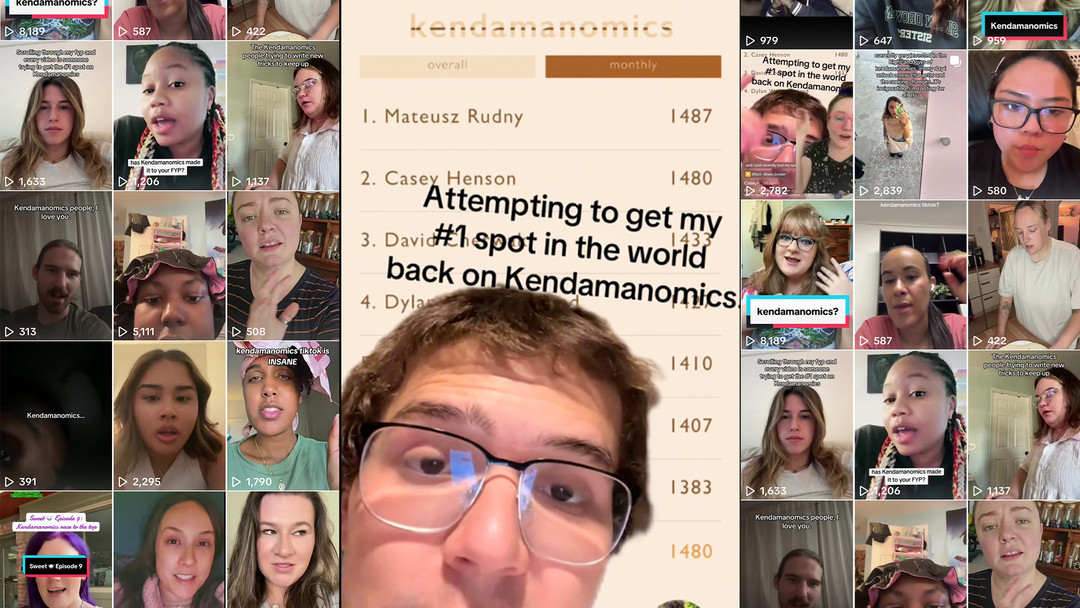How to start up your own Kendama Club
Written by: Joshua Grove
Hosting Kendama Clubs and Jams is a great way to support your community while giving kendama players a consistent time and place to hang out and play kendama. If scheduled regularly, jams can become the backbone of strong, connected communities. Below are suggested steps to set up either a one-time or reoccurring Club. The bottom of this article includes resources for you to utilize for your clubs!
Getting Started:
Step 1: Call up your Friends! Find your local Kendama family

Playing Kendama by yourself is fun and all but playing Kendama with someone else is always fun. Plus it pushes your abilities as a player, and playing with an entire group gets even better!
If you are just getting into Kendama, research your local area Kendama scene. Is anyone in your area posting Kendama content on social media? Have you checked the:
Facebook Kendama Community? Click Here
or Downspike: Click Here
Make a post reaching out to see if anyone in your area plays kendama!
Credit: @enlarged.dama
If no, and you can’t seem to find anyone in your area online, the next time you are with your friends, bring a/some kendamas with you to share and garner interest in your friends! The best way to find a new kendama player is to get your friends stoked on it.
If you are the only Kendama player in your area, it can feel discouraging to play in public at times. Don’t get discouraged - you are a 'Dama Pioneer, and if you enjoy the game, then it doesn’t matter what others think; inspire them to try it. #Firstspikechallenge
Gauge Interest of the people around you whom you think may like to learn and play kendama. Ask around to the people you know and set up a park hangout. If you have them, bring some extra Kendamas with you them and share with your new friends.
If yes, and there are players in your area that play kendama, see if they have any interest to start a club up with you. See if they would like to team up and work together. In this case, it all comes down to communication, seeing if your group can make it work and then the commitment to plan the club and follow through! The overall first step is to get the people you know together to communicate, gauge interest and set up a time to link up and play.
Whether you are teaming up or going at it solo, there are 3 big steps to lock in.
1. What time and day of the week works best for everyone?
2. Will the Club meet up once a week? Once every other week? Once a month?
3. Make it publicly known
Step 2: Plan the logistics

Settle on a time and location for the Club. Figure out if you want to hold club weekly, bi-weekly or monthly. Whatever you do, try to keep it consistent. In our experience, the best way to grow the local Kendama community is to hold weekly jams.
Even if you make a flyer, go to your first club in a park, and you end up with just yourself or one attendee, keep showing up and making it an available space to play kendama.
More meetups = A more thriving kendama community.
What Day? What Time?
Saturday and Sunday afternoons for 2-3 hours are great times that most people can make for this type of event. However, we host our Kendama club consistently on Tuesdays from 6-8pm. Find what day works best!
Step 3: Plan the Content of your Club

Things to Consider:
1) Is the Club just going to be a natural hangout and Jam space? Or
2) Is the Jam going to be a little more structured? Will you hold a tournament? Play Mini Games?
If you want to structure your jam with tournaments, mini-games or challenges...
Which activities will you lead?
- Consider designing short speed ladders for players to practice and then race through! ( see bottom of Page to learn how )
- You can play Mini Games! Watch the Sweets Kendamas Game guides to learn a few! Watch Them Here.
- You can have participants begin working on the 10 level Sweets Ken Degree. ( see the bottom of this page for Kendama Degree)
- The Kendama World Cup app by Gloken ( https://www.gloken.net/ ) is also a great resource for tricks to learn and structure challenges around. You can download that here!
Step 4: Volunteers/ Co-Leaders

This depends on what you are trying to accomplish with your club. If you are just starting up with you and a friend at a local park, play your favorite games, challenge one another, have fun!
This will set a foundation for you to facilitate and play different types of games in larger and larger groups as you grow the Club. If you are just getting a small group of friends together to hang out and play, encourage them to invite their friends!
As your club grows, jams like these are normally always run by someone or a couple of people volunteering their time to get everyone together. If one person can’t make it next week you can work together to make sure that there is someone that can step up and hold down the Jam so the community has a place to jam each week.
Depending on the size of the group, a lot of effort can go into running a club. Consistency is KI for building a strong community of players. Try and hold the club every week if possible!
Tournaments:
If you are looking to hold a Tournament at your club, consider getting a couple of volunteers to help judge the tournament and help run the Bracket.
Visit (https://challonge.com/) to create your own tournaments!

Step 5: Promote Your Club!

Get the word out to your local community about your Kendama Club! If there isn’t one already, create a local Kendama Facebook Page for your Kendama club/team.
Go to (https://www.facebook.com/groups) to set up a new group!
The “Create a new Group” button is on the bottom left of the page. Invite your friends and post the information about your clubs meet up time and place! This is also a great place to have members stay in touch with one another, share videos and ideas!
Every time you meet someone out in public interested in Kendama, invite them to come check out your Kendama Club! Invite them to your page to keep them in the loop!
Social media is a great way of promoting, you can also consider making flyers to post at local stores, schools, and organizations that allow you to. We suggest designing a flyer that Includes the address, time, and sponsors of the club/event.
PRIZES
You won’t always be able to get prizes donated to you, but that doesn’t mean it doesn’t happen and you shouldn’t try. Reach out to us at CS@sweetskendamas.com to see what is possible for your club.
When you make a post on IG or Facebook about your club, be sure to tag Sweets Kendamas (@sweetskendamas) and we might repost your flyer on our IG story!
Step 6: Run the Club

Make sure every person who attends, shows up and walks away feeling good! Remember Kendama is Fun! Help others get inspired to learn new tricks and feel welcomed! Players who attend these events are looking to try something new, hang out and play kendama with the community. New participants are looking to check out what you have going on so make them feel welcome!
Adding some structure to this by playing mini-games or organizing a pick-up tournament are great ways to help ensure everyone is engaged and has fun.
NOTE: While the club is taking place, take pictures and video to use and share later!
Be sure to always ask permission when taking any photos or videos. These photos and videos can be used to help you create more content for flyers and promoting your club. You could even film a Kendama Club Edit!
We would love to help promote your success on our end as well!
Step 7: Reflect on how the Club Went

Think back to not only what worked really well but reflect on areas for improvement. How could you structure things a little different next time so that transitions between things flow more smoothly? What games did everyone like a lot? Which games not so much?
Was the location a good place? Did everyone have fun? What was the most hype moment?!
Reflecting on this will help you engrain the process more and more and help you improve the flow of your club.
Step 8: Follow up Promotion

Use any media that was generated from your club as a way to hype up your future Club. Give people who did not attend a chance to check out what happened and live the event through photos and videos. Proper media reflection on clubs events can boost the attendance of future jams and competitions and help spread awareness of your club.
Want to make a bigger impact with your Club?

Community Justice:
In every town, there are organizations focused on some form of social justice. If you are wanting to make a bigger impact in your community while also growing the passion for kendama, look up “Local Social Justice Organizations” on Google to find out what organizations are doing in your area.
Email Joshua@sweetskendamasfoundation.org for help in setting something up in your community. (usually responds within 1 business day)
Extra Club Tips:
- For larger club events especially in parks, you may need a permit. Some parks require some form of a permit to play music or vend in a public space. Do your research and be sure to check with local park authorities for these requirements. This usually comes into play when vending/ microphones and speakers are set up in a park.
- You can also build relationships with local toy/ game store owners. Many Board game shops usually have some space in their shop at some point in their week and may be open to hosting a weekly, bi-weekly, or monthly Club. Yoga studios also have opportunities to RENT their space sometimes for pretty cheap.
Where there is a will, there is a way, and if you love Kendama so much, then what is stopping you from setting up your own Kendama club Today!?
RESOURCES:
How To Run/Create a Speed Ladder

What is a Speed Ladder:
A speed Ladder is a traditional form of Kendama Competition. A speed ladder consists of a list of 3 or more tricks.
Examples of Beginner, Intermediate and advanced speed ladders tricks:

SPEED LADDERS // How to play / How to Compete:
Players needed: 2 +
Judges Needed: If playing for fun use Kentegrity. In other words, be honest. If competing, be sure to have at least one judge per 3 players. Have judges sit attentively in front of the players. If a player does not complete a trick properly a judge will ask them to do it over.
Goal: Successfully complete each trick of the ladder ( the list ) in order.
How to Win: Be the first player ( or the first three players) to successfully complete all tricks of the ladder in order.
Starting: Players start in the same agreed upon resting position. Example, tamas on the ground or hanging in the air.
The MC or a judge will count the players down from 3 to begin.

Competition Tournaments - Advancing/ Placements:
When playing with a larger group of people, you can split the participants into groups of 5 to 15 players for the beginning heats. This number can change to the best needs of the group. Take the top one to three people from each round to move them on to the next heat.
Example: You have 15 total players. You can run three heats of 5 people. Take the top three players from each round. Then you have the final 9 players that can then be split into two groups or ran all together at once. You can take the top four players to the final heat to battle it out for 1st 2nd and 3rd place.
See if you can make a total of 3 heats at least.
Create Your Own Speed Ladder
Check out our Learn Page HERE for lists one through three.
Everyone is at a different skill level and it is important to have a ladder of tricks that challenges you but doesn’t completely overwhelm you. One of the biggest challenges that new players face is that they may not feel confident enough to compete because of the level of skill level that other more experienced players have.
That’s why we must create multiple skill level competitions and encourage new players to play! Beginner, Intermediate, advanced and OPEN are the most common divisions.
All of these levels are relative to the skill levels of your community of players. Use your judgment to create trick lists. When you are first trying this out, make it a group effort. Collaborate with everyone in your group to come up with what tricks should go where so to best suit everyone in their different levels.
Basic Division Outlines

Here are some basic outlines for each division: You can use tricks from the Ken Degree or the KWC trick Lists for ideas for each division.
Beginner: Should be set up at a level to where people who are playing for their first time or first couple times could play in the ladders.
Intermediate: Can be set to a standard of, players who have explored most of the basic grips and techniques.
Advanced: Can be set to a standard of, the player knows and understands the grips and trick techniques.
OPEN: Can be set to the standard of, tricks that are at the top tier of difficulty in your community of players.
Create Beginner Ladders for new players in your club, Intermediate ladders to challenge the newly addicted, advanced ladders to push progression and Open Ladders to keep raising the bar of skill in your local communities.
Use the Kendama Degree Below and or tricks from the basic Fundamentals lists here (https://sweetskendamas.com/pages/start-learning) for inspiration on choosing your tricks!
The Kendama World Cup app is also a great resource for tricks to choose from. You can download that here! https://itunes.apple.com/us/app/kendama-world-cup-trick-sheet/id1114419089?mt=8)










Thanks for to tutorial!!!
Leave a comment